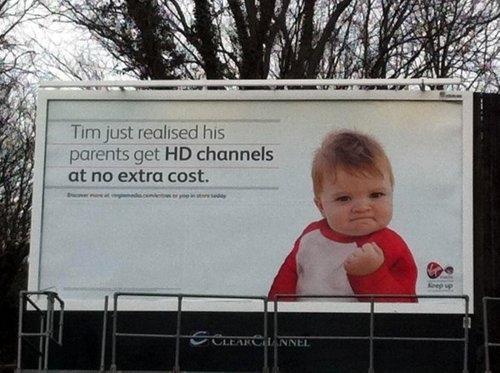Memetic Marketing close

In the past few years we have witnessed a new trend in content marketing as brands move away from traditional broadcast advertising to leverage a more social, engaging way to connect with consumers.
Content marketing is based on the idea of creating, curating and most importantly, publishing and sharing original content. A recent study conducted by [Outbrain and Econsultancy][1] concluded the following:
- Over 90% of respondents believe that content marketing will become more important over the next 12 months.
- Nearly three quarters (73%) of digital marketers agree that ‘brands are becoming publishers’.
- Less than half of companies have dedicated budgets (34%) or individuals dedicated (46%) to content marketing.
- Increased engagement is the most commonly cited objective for content marketers, with 52% of in-house marketers and 58% of agency marketers listing this as one of their top three business objectives.
So it is important then. However the word content is often cited in reference to long form written copy, especially when SEO is a key consideration of a marketing strategy. This is important but as marketers we must recognise that online copy is often skimmed through and rarely retained. The trend for time poor, information overloaded audiences is for content that they can consume quickly, i.e. visuals.
Visual information is more likely to be shared on social networks, especially with platforms like [Tumblr][2], [Pinterest][3] and [Instagram][4] coming to the fore. Facebook, Twitter and Google+ have all adapted their interfaces to make images and videos more prominent. Obviously there are many different types of visual marketing. Photos, infographics, images, charts, graphs, videos but I would like to concentrate on another area in this post. Memes.
What is a meme?
A meme is quite simply a concept, behaviour, or idea that spreads, usually via the internet. The earliest usage of the word meme is in the book The Selfish Gene by Richard Dawkins published in 1976. Just as genes replicate genetic data, memes replicate cultural ideas.
Successful memes infiltrate the Internet at rapid speed, especially across social networks and are a key element in a viral or guerrilla marketing campaign.
What the... ?
Ok, so before we carry on maybe you should check out some example memes:
- [Meme-tastic Marketing!][11]
- [Cheezburger][12]
- [Top 10 Internet Memes][13]
Why do they work?
A successful meme is contagious. It is relatable, simple to understand, usually funny and incredibly easy to share. They incite strong emotional reactions, spread fast and die quickly although they often fork into different paths before vanishing completely.
Any rules before I use them for my brand?
First off... be careful! My advice would be to initially immerse yourself in meme culture before trying to use them in any campaigns. Memes are often quite surreal, dark and very blunt. That isn’t going to work for every brand. Likewise the community backlash on a poorly thought through meme could be strong.
Relate your meme to your audience and test what works. Remember a meme is not actually about gaining mass attention, it is about spreading an idea, so properly examine your feedback. Do they get it?
If your meme begins to gain traction follow the buzz, identify your influencers and support them as they add to the experience and evolve the concept.
Be tasteful and cautious rather than just try to shock to attract attention. If you are piggy backing on existing trends you must avoid “dead” memes and try and align with those that fit your brand or are generic enough not to appear weird e.g. Y U NO guy, success kid, and me gusta. Browse [Reddit][5] to stay on top of things (and amuse yourself).
Within two seconds you must convey who you are, why someone should buy from you instead of a competitor, trigger an emotional response and generate a desire.
Source: [www.gmarketing.com/articles/57-guerrilla-marketing-memes][6]
Some brands getting it right

'Success Kid' for Virgin Media. This campaign perfectly fits with the sentiment behind this Internet phenomenon that dates back to a 2007 Flickr picture of Sammy.

'Y U NO' Guy for HipChat. By using one of the most recognised characters from Rage Comics the team at Hipchat generated a huge amount of coverage from a single 4 week billboard campaign.
Other notable examples include Pistachios' [Honey Badger][7] and [Keyboard Cat][8], [Chuck Norris for World of Warcraft][9] and [Old Spice Man for Puss in Boots][10]. [1]: http://econsultancy.com/uk/reports/content-marketing-survey-report [2]: https://www.tumblr.com/ [3]: http://pinterest.com/ [4]: http://instagram.com/ [5]: http://www.reddit.com/ [6]: http://www.gmarketing.com/articles/57-guerrilla-marketing-memes [7]: http://www.youtube.com/watch?v=y-e4vu_wL-M [8]: http://www.youtube.com/watch?v=-IcGvBE5xfg [9]: http://www.youtube.com/watch?v=arKpdxjHamI [10]: http://www.youtube.com/watch?v=onZxdodEFT8 [11]: http://pinterest.com/hubspot/meme-tastic-marketing/ [12]: http://www.cheezburger.com/ [13]: http://www.squidoo.com/top-10-internet-memes